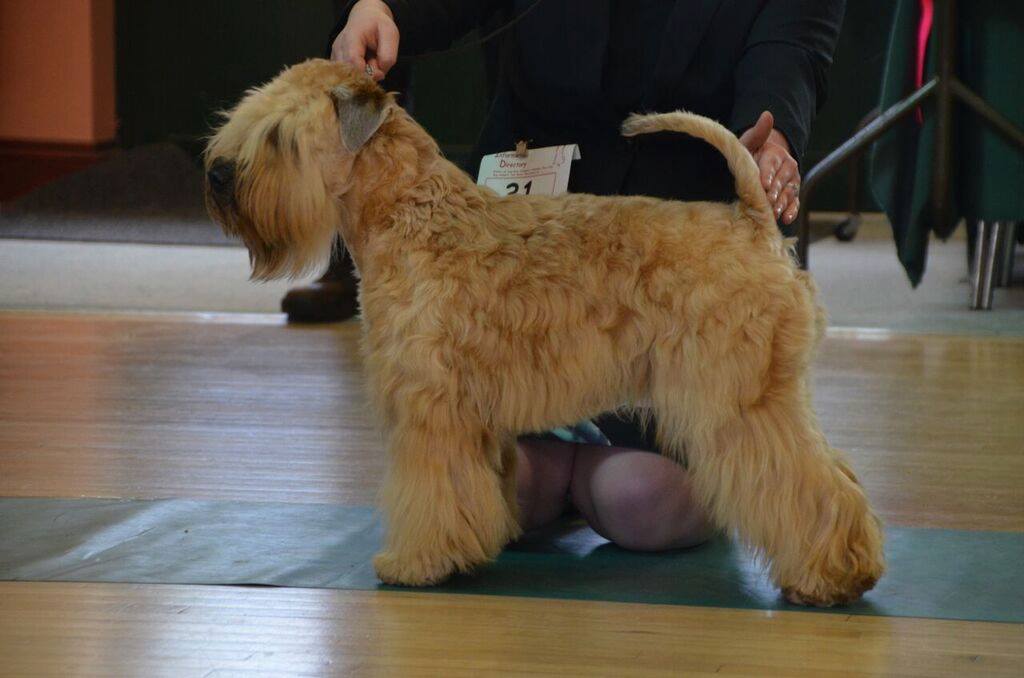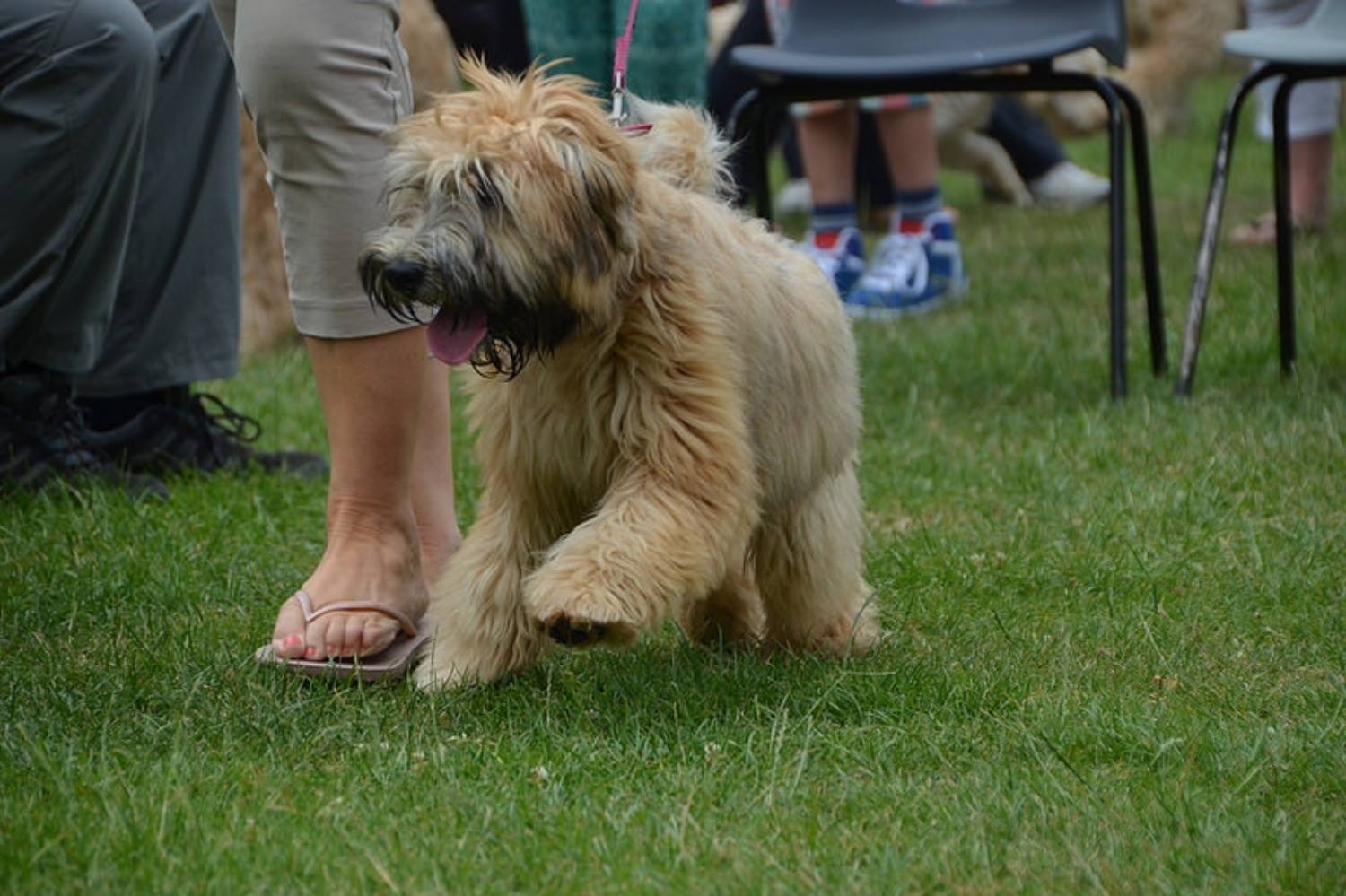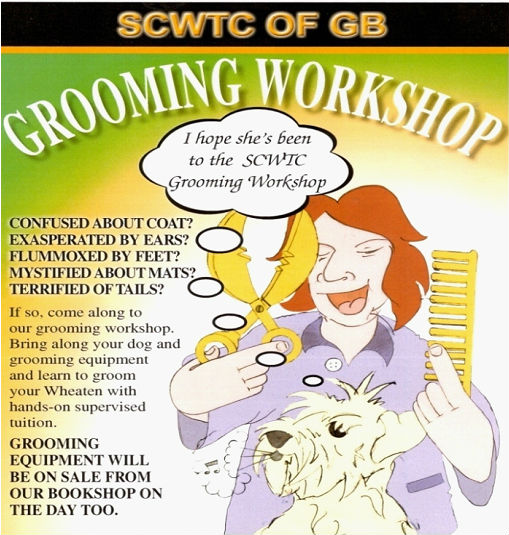Care of puppy coat
It is essential that the puppy is groomed daily. Ensuring he learns to cooperate (and even enjoy) grooming sessions now while his coat is short will save endless struggles in the long run. When a puppy is only 8 weeks old, it takes very little time to groom the coat, but both the coat and the puppy grow very rapidly!
Start from the time you get the puppy. Pick a time when he’s had a good romp and is tired and sleepy. Sit on the floor with him and make it a cuddle session going over him gently with any sort of comb. Make sure your comb has long enough teeth to go right through the coat to the skin – you will not hurt the dog. Handle his paws, ears and tail with lots of praise and a few treats. This gets him used to being handled (useful when you take him to the vet) and also is a great way of bonding with your dog.
Many owners like to groom their puppy when he is lying on the floor, sleepy and relaxed. Or you can stand the puppy on a firm, non-slippery surface (such as a grooming table or a rubber bath mat). Groom the coat using a fine metal comb. Talk to the puppy, reassuring him if necessary. Gently look at eyes, teeth, and gums. Lift the ears and check for cleanliness. This will accustom your puppy to being handled, which will assist greatly as he gets older. Grooming should be as enjoyable for both of you as possible! Reward the puppy with a cuddle and a treat.
As your pup gets older, it is essential to go through the coat carefully with a metal comb. Make sure your comb goes right through the coat to the skin – you will not hurt the dog. Groom away from the skin in the direction of hair growth. You will find that some dead hair comes out as you comb.
Try and persuade your Wheaten Terrier that it is delightful fun to lie on his back and have his tummy combed. This will be of benefit later in grooming those quickly matted and hard-to-get-at areas under the legs and on the chest.
When checking the ears, gently remove any excess hair from the ear canals, using your thumb and forefinger to pull out a few wisps at a time. This tickles a bit but it is necessary to prevent wax build-up in the ear. (If your fingers slip on the hair, try a little talcum powder on your fingers – but not in the dog’s ear). If required, wipe the underneath of the ear flap with damp cotton wool. DO NOT delve or poke into the ear. If the dog shakes his head excessively, scratches at his ear or the ear is hot and inflamed, it is best to seek veterinary advice.
As the puppy’s coat gets longer, it is advisable to tidy the hair around the outer edge of the ear. Carefully trim the hair using blunt-ended scissors and using the shape of the ear as a guide. This keeps the weight of the coat from pulling the ear out of shape and allows the air to circulate into the ear.
Gently pick out any goo that has collected in the corner of the eyes. At the tail end, a little baby talcum and a brush will help remove any soiling that sometimes occurs. For this reason, keep the coat under the tail tidied and reasonably short.
Veterinary surgeons are now promoting cleaning of dogs’ teeth as a way of preventing ‘tartar’ build up and offensive ‘doggy breath’. Puppies need to become accustomed to you looking into their mouths. You should check his teeth to ensure that his milk teeth are falling out as the permanent teeth come in and that two teeth are not occupying the same site. Do not worry too much – given plenty to chew on, this will usually correct itself with time. The puppy should not need veterinary attention unless the teeth are causing discomfort.
Chewing will keep a puppy’s teeth clean at this stage and there are a number of products on the market designed for puppies. Avoid real cooked bones (they splinter) – though raw chicken wings can be given when the teeth start to come through, rawhide strips (they soften and can choke the dog – twists are better) and rubber toys (chunks can be swallowed).
Puppy nails grow very quickly and may need frequent cutting. Ask your Vet or an experienced dog owner to show you how it is done, as the nails can be cut too short which is painful for the dog. His dew claws, if he has them, must be periodically trimmed. Check his feet too to make sure there is nothing caught between his pads.
While grooming your dog keep an eye out for parasites. As well as being uncomfortable, flea bites can cause allergic reactions in some dogs. Consult your Veterinary Surgeon for the best method of treatment.






